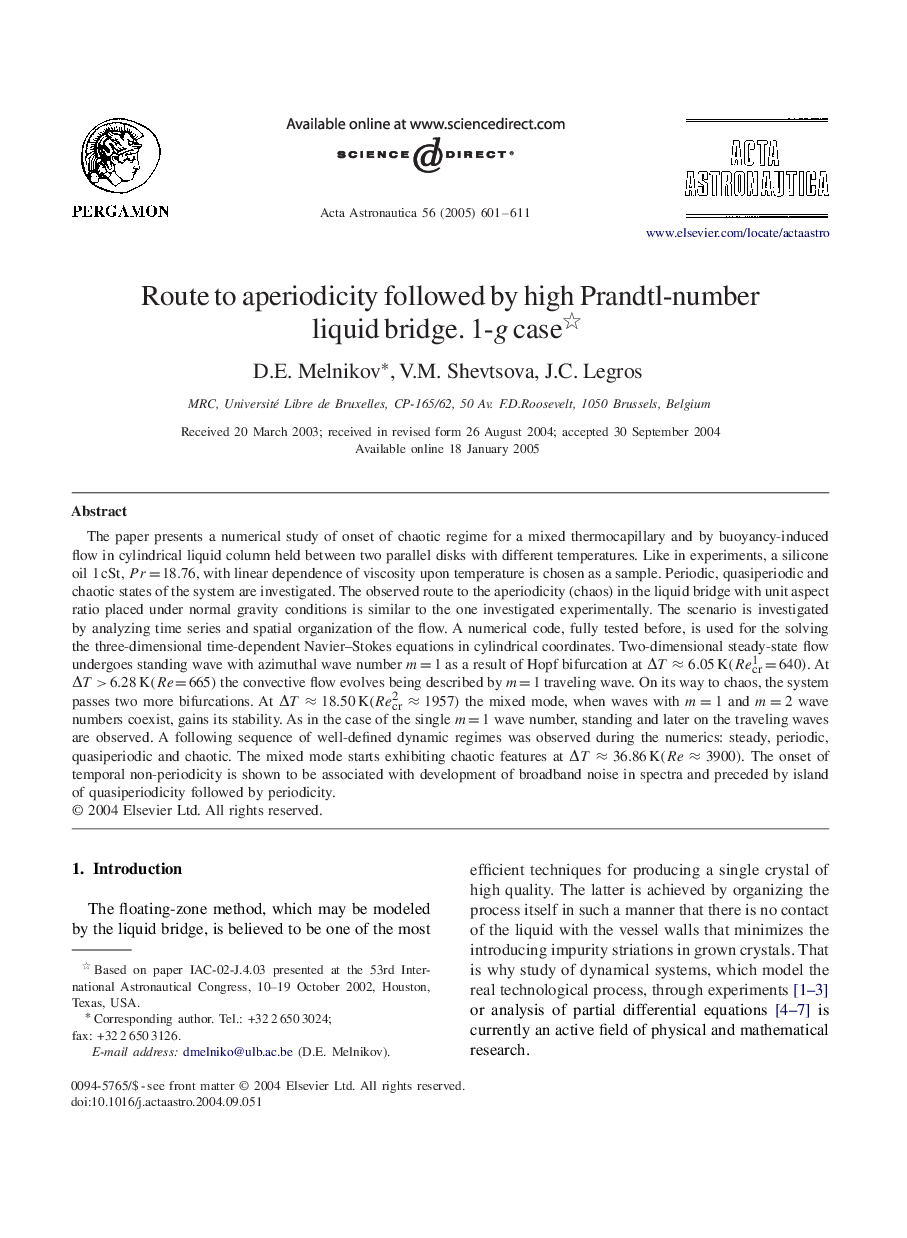| Article ID | Journal | Published Year | Pages | File Type |
|---|---|---|---|---|
| 10680950 | Acta Astronautica | 2005 | 11 Pages |
Abstract
The paper presents a numerical study of onset of chaotic regime for a mixed thermocapillary and by buoyancy-induced flow in cylindrical liquid column held between two parallel disks with different temperatures. Like in experiments, a silicone oil 1Â cSt, Pr=18.76, with linear dependence of viscosity upon temperature is chosen as a sample. Periodic, quasiperiodic and chaotic states of the system are investigated. The observed route to the aperiodicity (chaos) in the liquid bridge with unit aspect ratio placed under normal gravity conditions is similar to the one investigated experimentally. The scenario is investigated by analyzing time series and spatial organization of the flow. A numerical code, fully tested before, is used for the solving the three-dimensional time-dependent Navier-Stokes equations in cylindrical coordinates. Two-dimensional steady-state flow undergoes standing wave with azimuthal wave number m=1 as a result of Hopf bifurcation at ÎTâ6.05K(Recr1=640). At ÎT>6.28K(Re=665) the convective flow evolves being described by m=1 traveling wave. On its way to chaos, the system passes two more bifurcations. At ÎTâ18.50K(Recr2â1957) the mixed mode, when waves with m=1 and m=2 wave numbers coexist, gains its stability. As in the case of the single m=1 wave number, standing and later on the traveling waves are observed. A following sequence of well-defined dynamic regimes was observed during the numerics: steady, periodic, quasiperiodic and chaotic. The mixed mode starts exhibiting chaotic features at ÎTâ36.86K(Reâ3900). The onset of temporal non-periodicity is shown to be associated with development of broadband noise in spectra and preceded by island of quasiperiodicity followed by periodicity.
Related Topics
Physical Sciences and Engineering
Engineering
Aerospace Engineering
Authors
D.E. Melnikov, V.M. Shevtsova, J.C. Legros,
